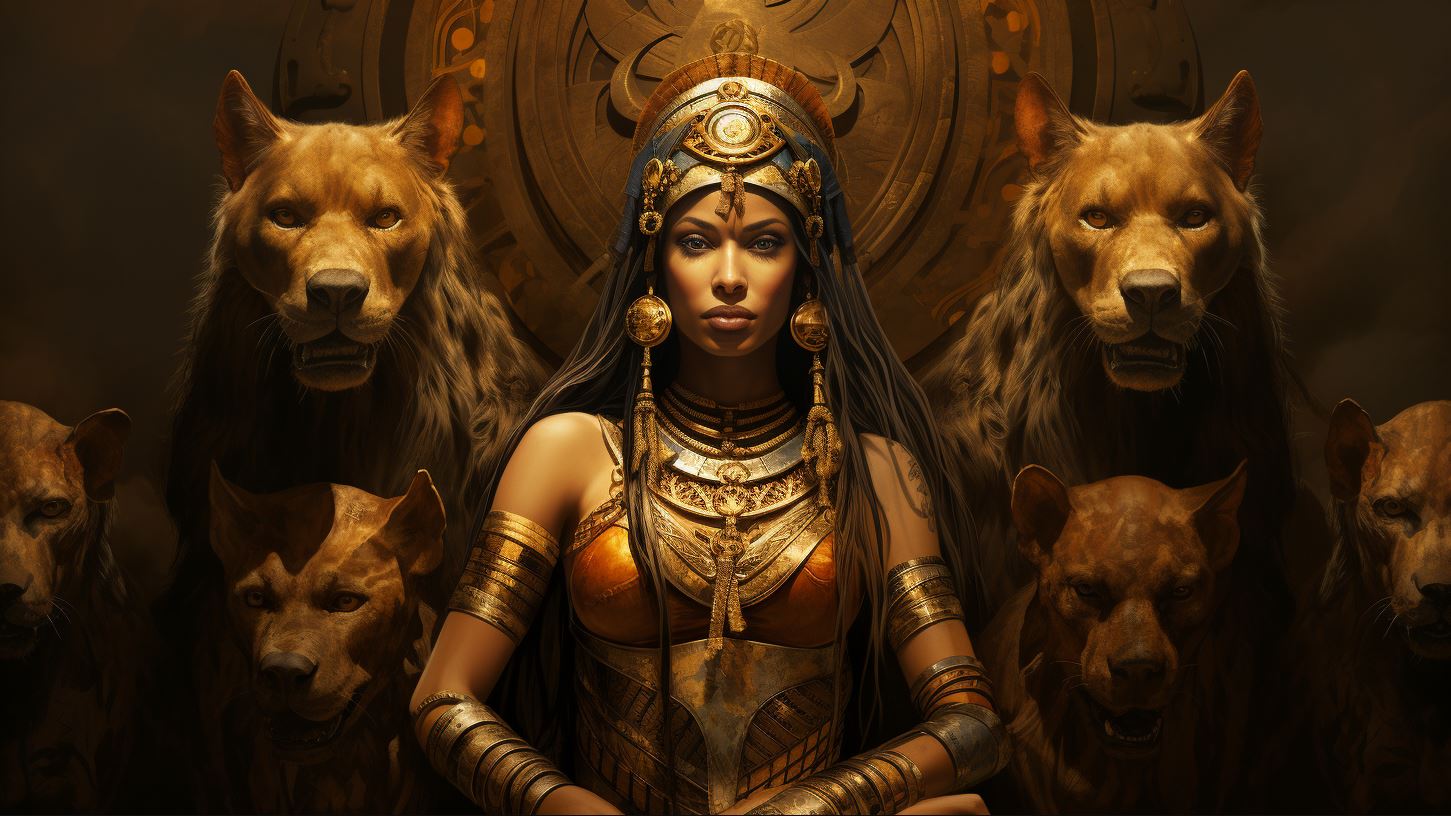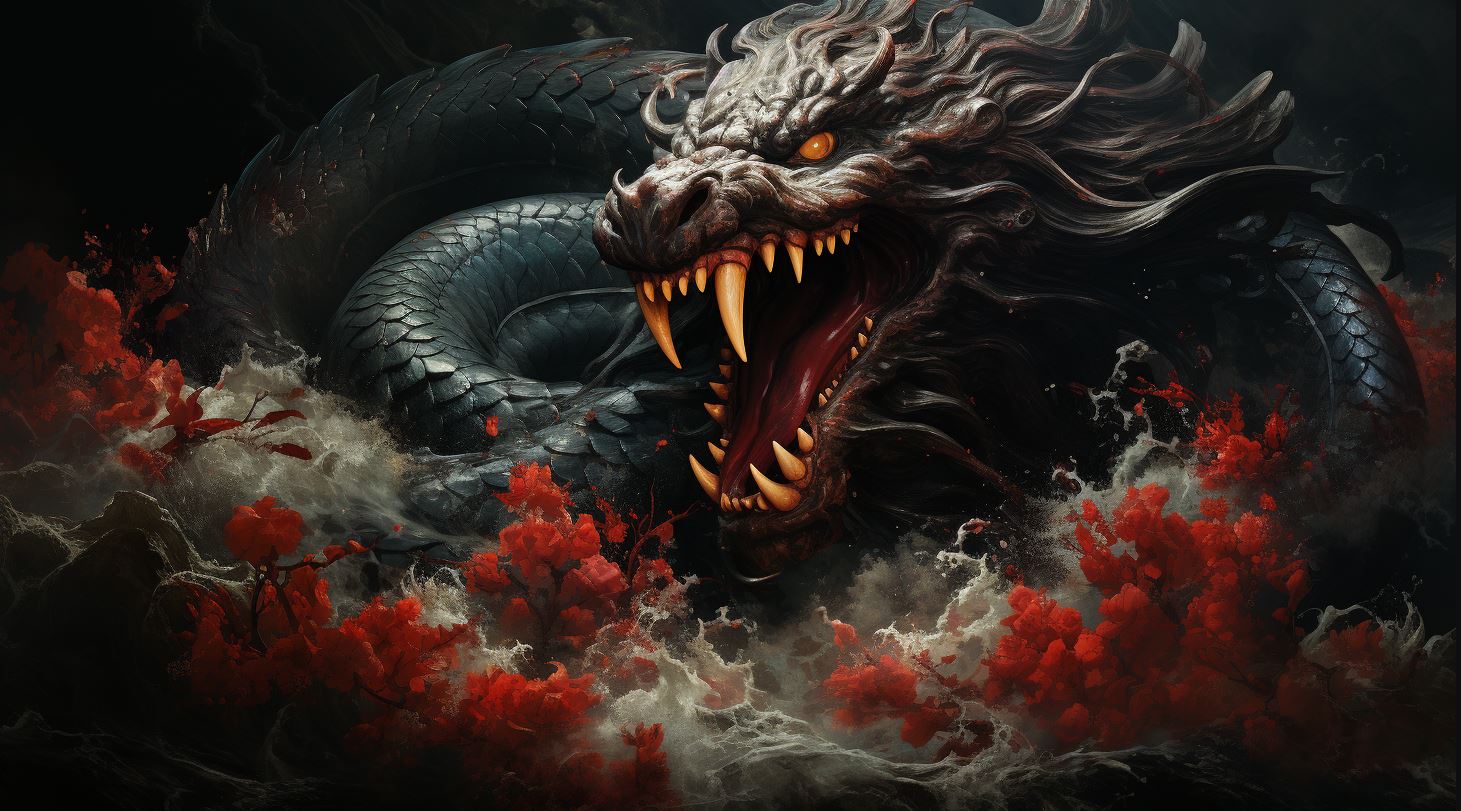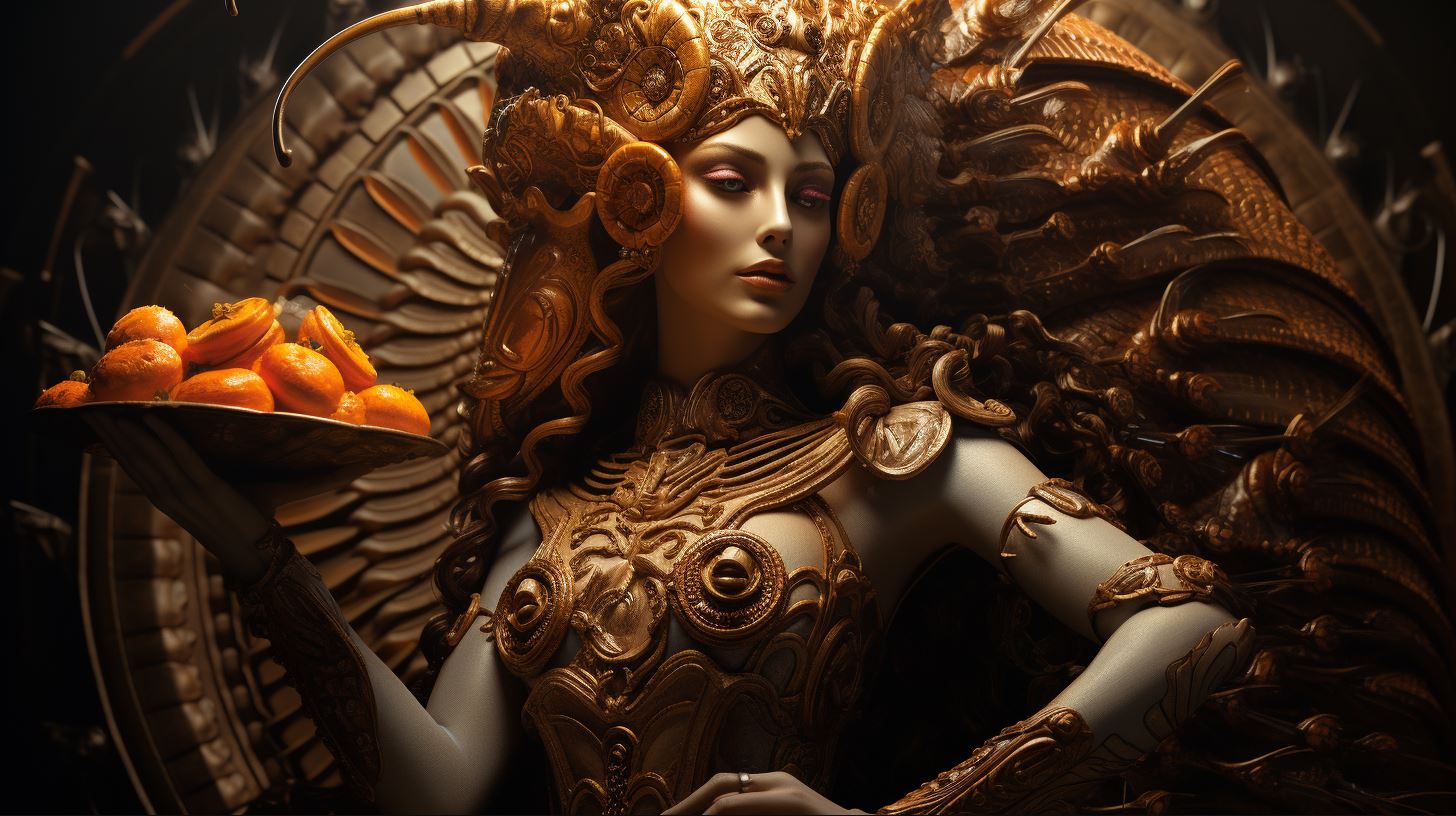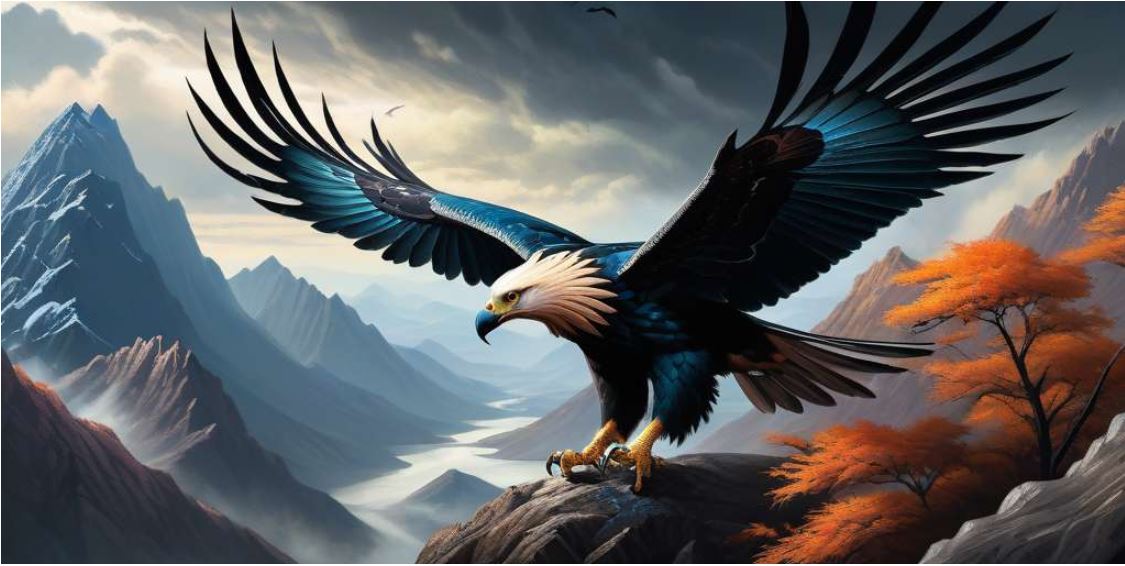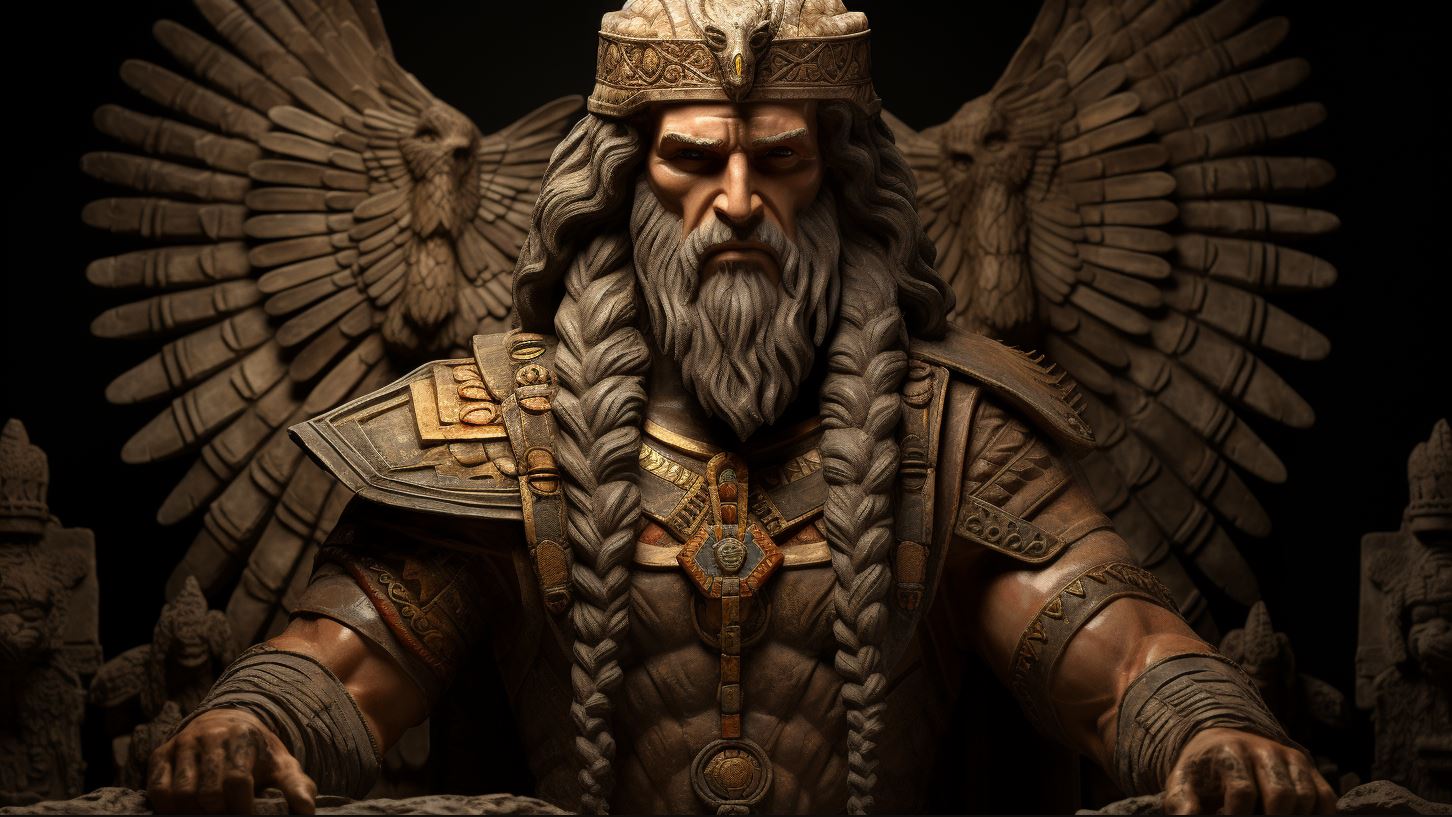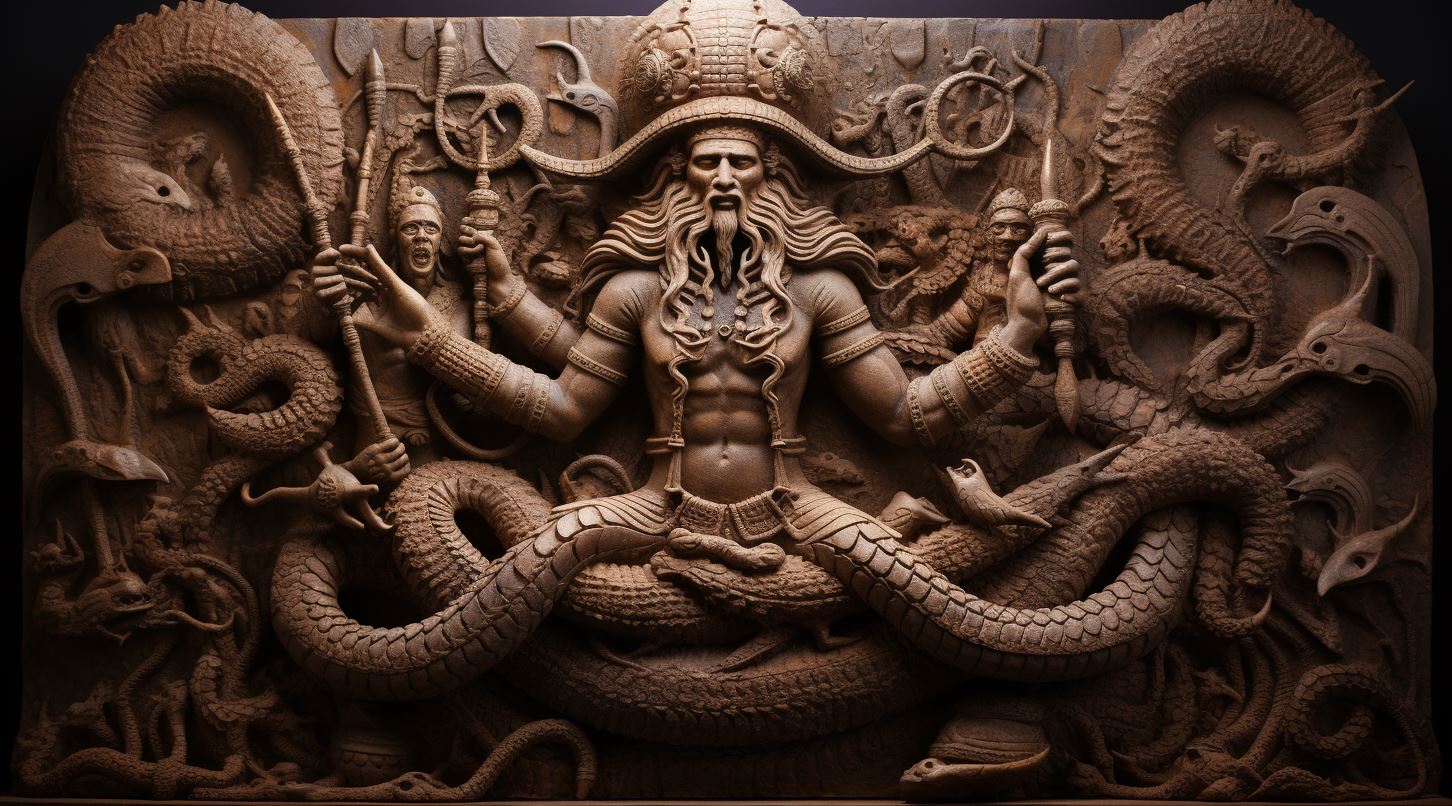Bau Goddess of Dogs: An Ancient Mesopotamian Deity Associated with Healing and Motherhood

Bau Goddess of Dogs is an ancient Mesopotamian deity known for her association with healing and medicine. As dogs were increasingly seen as beings of healing, Bau gained prominence as a goddess of healing and was revered as a mother goddess and midwife.
Worship of Bau took place in various Mesopotamian cities like Girsu, Lagash, and Kish. She also had connections with other deities, and debates persist regarding the reading of her name in Assyriological studies.
Gain insight into Bau’s role and unravel the significance of places like Gula and Nippur in her story.
The History of Bau Goddess of Dogs
According to ancient Mesopotamian beliefs, Bau Goddess of Dogs holds a significant place in their religious pantheon. She is associated with various aspects, including healing, medicine, motherhood, and midwifery. As time passed, dogs came to be seen as beings with healing powers, leading to Bau’s connection with them and her role as a deity of curative abilities.
The worship of Bau dates back to different city-states in Mesopotamia, such as Girsu, Lagash, and Kish, where she was highly esteemed and revered. Bau’s influence extended beyond her individual deity status as she was associated and linked with other gods and goddesses, creating a complex web of connections within the ancient Mesopotamian pantheon.
Despite the extensive research conducted on Bau, there are still debates concerning the reading and interpretation of her name in Assyriological studies. Scholars continue to explore and analyze the significance and possible variations in the pronunciation and meaning of her name.
Understanding the history and significance of Bau Goddess of Dogs provides insights into the religious beliefs and cultural practices of ancient Mesopotamia. It sheds light on the reverence given to dogs and their association with healing, emphasizing the importance of Bau as a goddess of medicine, motherhood, and vitality.
Bau’s Association with Healing and Medicine
Bau, the revered Mesopotamian goddess, is closely associated with healing and medicine. In ancient times, as dogs started to be recognized for their healing abilities, Bau acquired the role of a goddess of curing.
She became synonymous with the power to restore health and alleviate ailments.
As a healing deity, Bau’s influence extended beyond physical well-being. It was believed that she possessed the ability to heal not only physical wounds but also emotional and spiritual afflictions.
People sought her guidance and invoked her name for blessings of healing and protection.
Bau’s connection with dogs as healing beings further solidified her significance. Dogs were revered companions in the healing process, providing comfort and support to individuals in their time of need.
They were seen as sacred animals, believed to possess the ability to ward off evil spirits and bring solace.
Throughout Mesopotamian history, Bau’s association with healing remained strong. She was regarded as a guardian and provider of divine medicine, ensuring the well-being of her worshippers.
Her influence as a goddess of healing and her connection with dogs continued to shape the belief system of ancient Mesopotamia.
The Role of Dogs as Healing Beings in Mesopotamia
In ancient Mesopotamian culture, dogs held a significant role as beings associated with healing and well-being. The people of Mesopotamia believed that dogs possessed innate healing powers and could bring comfort and restoration to those in need.
Dogs were considered sacred animals and were believed to be connected to the goddess Bau, the deity associated with healing and medicine. It was believed that Bau herself took on the form of a dog or was accompanied by dogs.
As the perception of dogs as healers grew, Bau’s association with them solidified, and she became known as the goddess of dogs.
These healing properties were attributed to dogs’ keen sense of smell, which was believed to detect ailments and diseases in individuals.
They would provide solace and companionship to those who were sick or in pain, and their presence was thought to have a calming and therapeutic effect.
In homes and temples, dogs were kept as companions and were often seen as protectors against evil spirits and diseases.
People would seek their presence for physical and spiritual healing, and it was believed that the dogs’ mere presence could ward off negative energies and promote overall well-being.
Thus, in Mesopotamian society, dogs played an integral role as healing beings, offering both physical and emotional support to those in need.
Their connection to the goddess Bau elevated their status and solidified their role as respected and revered creatures associated with healing and wellness.
Understanding the significance of dogs in ancient Mesopotamia provides insight into the cultural beliefs and practices surrounding healing and the role of animals in promoting well-being.
Bau as a Mother Goddess and Midwife
Bau, the revered goddess of dogs in ancient Mesopotamia, held a significant role as a mother goddess and midwife. She was believed to be the nurturer and protector of all life, especially during childbirth.
As a mother goddess, Bau symbolized fertility, creation, and the cycle of life.
Devotees would invoke Bau’s divine assistance and guidance during childbirth, seeking her blessings for a safe and successful delivery.
Her association with dogs further emphasized her role as a caregiver, as dogs were viewed as loyal companions and protectors in Mesopotamian society.
Legend has it that Bau possessed divine healing powers, enabling her to ease the pains of labor and promote the well-being of both mother and child.
Her presence during childbirth was believed to ensure a smooth transition into motherhood and to safeguard the newborn’s health.
Worshippers would make offerings and prayers to Bau, seeking her blessings not only for successful childbirth but also for the overall well-being of their families.
Her maternal and nurturing attributes made her a beloved and respected figure among the Mesopotamian people.
Bau’s role as a mother goddess and midwife solidified her importance in the realm of ancient Mesopotamian religion, where she was seen as a protector and guide for the cycles of life, particularly during the sacred moment of birth.
Worship of Bau in Girsu, Lagash, and Kish
The worship of Bau, the goddess of dogs, held a significant place in ancient Mesopotamia. Her cult was particularly prominent in the cities of Girsu, Lagash, and Kish. In Girsu, Bau was revered as a powerful healing deity and was an integral part of the city’s religious practices.
At the Temple of Bau in Lagash, devoted followers gathered to offer prayers and sacrifices in honor of the goddess. It was believed that by seeking Bau’s blessings, individuals could receive healing and protection from ailments.
The temple served as a center for healing rituals conducted by priests and priestesses who were dedicated to the worship of Bau.
In Kish, Bau was worshipped as a divine mother figure and a guardian of the community.
Her presence was particularly felt during childbirth, where she was invoked for a safe delivery. The people of Kish turned to Bau for guidance and protection in all aspects of their lives, seeing her as a caring and benevolent deity.
The worship of Bau in these cities was marked by elaborate ceremonies, offerings, and rituals to express devotion and seek her favor. The presence of Bau’s cult in Girsu, Lagash, and Kish exemplifies the reverence that the ancient Mesopotamians held for this goddess of dogs and her vital role in their religious practices.
Bau’s Connections with Other Deities
Bau, the goddess of dogs, held significant associations with other deities in Mesopotamian mythology. Some of these connections shed light on her various aspects and roles in ancient belief systems.
- Gula: Bau was closely linked to Gula, the goddess of healing and medicine.
Together, they represented the power of healing and the divine aspect of nurturing.
- Ninkilim: Bau’s connection with Ninkilim, the goddess of the netherworld, highlighted her association with death and the passage to the afterlife.
- Nintinugga: Bau’s relationship with Nintinugga, the goddess of healing and magic, emphasized her role as a deity of curative powers.
- Inanna: Some texts suggest a connection between Bau and Inanna, the goddess of love and fertility.
This association may indicate Bau’s role in facilitating fertility and childbirth.
In Mesopotamian mythology, the interconnectedness of deities reflects the complex belief system and the multifaceted nature of divine figures.
Bau’s associations with these various gods and goddesses offer insights into her diverse functions and attributes.
The Debates on the Reading of Bau’s Name
The reading and interpretation of Bau’s name in Assyriological studies have sparked ongoing debates and discussion. Scholars have put forth various theories regarding the pronunciation and meaning of her name, based on the limited available evidence.
Some argue that Bau’s name is pronounced as “Bau” itself, while others suggest alternative readings such as “Baba” or “Bawu.” Each proposed pronunciation carries its own implications and potential connections to other Mesopotamian deities and concepts.
The ambiguity and multiple potential readings of Bau’s name have led to differing interpretations of her role and significance in Mesopotamian mythology. Some scholars associate her name with terms related to healing or marshlands, reflecting her connections with medicine and the fertile landscapes of Mesopotamia.
Furthermore, the debates on the reading of Bau’s name extend to questions of her origin and cultural influences. Different theories have been proposed, linking her to various sources such as Sumerian, Akkadian, or even earlier cultural traditions.
Overall, the debates surrounding the reading of Bau’s name highlight the challenges of interpreting ancient texts and the complexities of understanding the full extent of her role and significance in Mesopotamian religious beliefs.
Common Misconceptions about Bau Goddess of Dogs
There are several common misconceptions surrounding the ancient Mesopotamian deity, Bau Goddess of Dogs. Let’s take a closer look at these misunderstandings:
- Bau was not solely associated with dogs: While Bau is often referred to as the “Goddess of Dogs,” it is important to note that her domain extended beyond just canines.
She is also associated with healing, medicine, motherhood, and midwifery.
- Bau’s role as a healing deity is not limited to dogs: Although the connection between Bau and dogs is significant, it doesn’t mean that she exclusively relied on dogs for healing.
Dogs were seen as beings of healing, and Bau’s association with them reflected her connection to healing and curative powers.
- Bau’s worship was not limited to specific locations: While Bau was worshipped in prominent cities like Girsu, Lagash, and Kish, her cult and influence spread throughout Mesopotamia.
Bau’s worship was not confined to a single geographical area.
- The pronunciation of Bau’s name is uncertain: In Assyriological studies, there is ongoing debate regarding the correct pronunciation of Bau’s name, leading to different interpretations and spellings.
By dispelling these misconceptions, we can gain a clearer understanding of the multi-faceted nature of Bau Goddess of Dogs and her significance in ancient Mesopotamian culture.
Understanding the Significance of Gula, Nippur, and More in Bau’s Story
Within the context of Bau Goddess of Dogs, places like Gula and Nippur play a crucial role in understanding her story and importance. Gula, known as the “great physician,” represents the healing aspect associated with Bau’s divine nature.
It was believed that Gula held the power to cure ailments and provided blessings of good health.
Nippur, on the other hand, was considered a significant religious center where Bau was worshipped alongside other deities.
The temples in Nippur dedicated to Bau served as sacred spaces where people sought her blessings and divine intervention.
The inclusion of “and more” in this section refers to the broader context of Bau’s story, which encompasses other aspects such as her association with fertility, childbirth, and women’s roles.
These elements highlight her multifaceted nature and the complexities of her worship.
By exploring the significance of Gula, Nippur, and other related factors, we gain a deeper understanding of the cultural, religious, and societal influence that Bau had in Mesopotamia.
It allows us to piece together fragments of her legend and appreciate her enduring legacy as both a goddess of dogs and a powerful healer.
.











